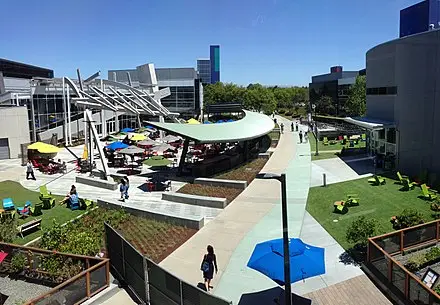Architecture encompasses more than the mere creation of buildings; it shapes environments that directly impact how we live, work, and interact. This discipline increasingly integrates insights from psychology, sociology, technology, and more, weaving together diverse knowledge to enhance functionality, aesthetics, and the sustainability of designs (Pinter-Wollman et al., 2018).
Interdisciplinary approaches address the complex, multifaceted challenges of contemporary design. Psychological insights, for instance, can determine space configurations that influence mood and productivity, improving environments from homes to offices. Similarly, sociological principles can guide the creation of spaces that enhance community interaction and cohesion, proving essential in urban planning.
The High Line in New York City [1] exemplifies successful interdisciplinary collaboration, transforming an obsolete railway into a beloved urban park. This project involved landscape architects, urban planners, ecologists, artists, and the community, each contributing unique perspectives. Another illustration is the Googleplex headquarters [2], designed with insights from organisational psychology to foster an environment that enhances innovation and collaboration among its users.

Figure 2. The High Line in New York City. Source: (https://en.wikipedia.org/wiki/High_Line)
While the benefits are significant, interdisciplinary approaches also present challenges, such as integrating diverse methodologies and managing varied teams. For instance, differing communication styles between disciplines may require adaptation, and projects like the High Line’s Moynihan Connector highlight the additional challenge of coordinating construction within the constraints of an active urban environment. Architects must navigate these complexities through effective communication and shared goals to harness the potential of diverse design inputs.

Figure 2. Googleplex courtyard (Source: https://en.wikipedia.org/)
The Role of Technology in Interdisciplinary Architecture Technological advancements are essential in modern interdisciplinary architectural design. Design software such as CAD enables complex visualisations and simulations, while data analysis tools help architects understand patterns in human behaviour and environmental conditions. Additionally, advances in construction technology and prefabrication techniques streamline processes, allowing for the realisation of innovative designs even within challenging urban environments, as seen in the High Line’s Moynihan Connector project. Virtual reality offers immersive experiences for both planning new spaces and engaging with historical contexts. For example, VR can be used to digitally reconstruct buildings that no longer exist, bringing historical architecture to life in a way that transcends traditional preservation methods. Looking ahead, artificial intelligence (AI) has the potential to further enhance interdisciplinary collaboration by analysing vast amounts of data, optimising design outcomes, and even suggesting unexpected creative solutions.
As architecture evolves, the significance of interdisciplinary approaches grows. Educational institutions are adapting by offering integrated curricula that prepare students to work effectively across various disciplines. The future of architecture will likely see even greater collaboration between fields, leading to more thoughtful, inclusive, and innovative design solutions.
Embracing interdisciplinary practices in architecture is a necessity, not just a trend, in our complex global landscape. This approach requires a commitment to continuous learning and collaboration, aiming to break down silos in both practice and education. By fostering an interdisciplinary mindset and embracing partnerships with diverse stakeholders, from community members to construction experts, architects can contribute to building not only structures but also sustainable, dynamic communities. Let’s challenge ourselves to think beyond conventional boundaries and embrace the rich possibilities that interdisciplinary cooperation offers.
Pinter-Wollman, N., Penn, A., Theraulaz, G., & Fiore, S. M. (2018). Interdisciplinary approaches for uncovering the impacts of architecture on collective behaviour. Royal Society Philosophical Transactions B, 373(1753),20170232. https://doi.org/10.1098/rstb.2017.0232
[1] https://www.thehighline.org/
[2] https://studios.com/googleplex.html
Sign in to continue
Not a member yet? Sign up now

Administrative Assistant
Deniz Bol is the Administrative Assistant at SPACE Studies, where she supports the day-to-day operations and contributes to the smooth functioning of the organization. Alongside her administrative role, Deniz is an artist with a passion for creative expression. She is currently pursuing her studies at the University of the Arts London (UAL), where she continues to develop her artistic practice. Her organizational skills, paired with her artistic background, make her a valuable asset to the SPACE Studies team, helping bridge the worlds of administration and creativity.
E-mail: denizbol@spacestudies.co.uk

Digital Marketing Consultant
Murat Oktay is the Digital Marketing Consultant at SPACE Studies, where he provides strategic guidance to enhance our digital presence and community engagement. With a keen eye for digital marketing trends and best practices, Murat plays a key role in refining our content strategy, expanding our online reach, and connecting with a wider audience. His expertise in digital tools and innovative marketing techniques aligns with SPACE Studies’ mission as a social enterprise, ensuring that our campaigns are impactful and resonate with our commitment to social responsibility in architecture and design. Outside his work with SPACE Studies, Murat stays at the forefront of digital marketing advancements, continually exploring new tools and sharing his insights with peers.
E-mail: muratoktay@spacestudies.co.uk

Marketing Manager
Santa Noella Matabaro is the Marketing Manager of SPACE Studies, bringing her expertise in strategic planning, community engagement, and relationship-building to the organization’s mission as a social enterprise. With a background in Politics & Law from the University of Kent, Santa combines analytical insights with a creative approach to advancing SPACE Studies’ vision of fostering interdisciplinary dialogue in architecture, design, and urban planning. In her role, she develops targeted campaigns and strategic partnerships, building brand presence and fostering meaningful connections with the community. Santa’s collaborative and people-centered approach enhances SPACE Studies’ impact, aligning with its commitment to social responsibility and innovation in the built environment.

Academic Content Coordinator
Betul Uckan is an architect and dedicated academic with a background in both architectural practice and research. She holds a Master of Science in Architectural Design and a Bachelor’s degree in Architecture from Istanbul Technical University, where she cultivated her interests in architectural theory and design. Betul has gained experience as a research assistant in various universities, contributing to design studios and foundational courses. She has also worked in the field as an architect with projects focused on design, modeling, and construction, and has been involved in notable projects, including Maltepe Piazza and Emaar Square in Istanbul. With her expertise spanning both digital and material architecture, Betul brings a dynamic, interdisciplinary approach to her role as the Academic Programme Coordinator.
E-mail: betuluckan@spacestudies.co.uk

Senior Researcher & Managing Editor
Arghavan Pournaderi is a senior researcher in the field of architectural conservation and restoration, with an academic foundation in architecture and specialized expertise in historic sites and buildings. Completing her PhD at the Art University of Isfahan, Iran, in 2019, her research has contributed to the understanding of Iran’s architectural heritage, with a focus on Isfahan’s urban and architectural evolution during the Safavid period. In addition to her extensive research, Dr. Pournaderi has held academic positions at various institutions in Isfahan, teaching at both undergraduate and graduate levels. Her work extends beyond academia as she contributes to SPACE Studies as Senior Researcher & Managing Editor, where she oversees scholarly initiatives that foster deeper interdisciplinary dialogue in architecture and heritage conservation.

Senior Researcher & Educational Consultant
Gregory Cowan is a Senior Researcher and Educational Consultant at SPACE Studies, where he leads initiatives that bridge academic research and practical application in architecture and urban design. He contributes his extensive experience to mentoring postgraduate students, designing educational workshops, and guiding community-focused projects. Gregory is also a freelance academic at the University of Wales Trinity St David and the University of Westminster, and founder of The Architects Coach. His expertise spans architectural workspace analysis, professional development, and positive intelligence coaching.
E-mail: gregorycowan@spacestudies.co.uk

Senior Researcher
Alison Hand is a Senior Researcher at SPACE Studies. She is a painter and writer with an MA in Painting from the Royal College of Art. Alison’s work focuses on creating absurd, unstable heterotopic spaces and dialogues with painting history. She is currently the Artist in Residence for King’s College London Philosophy Department on the Dreams and Wakeful Consciousness Research Project, exploring themes of time and simultaneity in new work. Alison has received numerous awards for her painting and is currently working with Bloomsbury Publishers on a major essay on Drawing in Contemporary Art. She is also the BA Fine Art Programme Leader at Art Academy London and co-director of Cement Arts. Her role at SPACE Studies involves leading research projects, mentoring junior researchers, and contributing to our artistic and academic initiatives.
E-mail: alisonhand@spacestudies.co.uk

Senior Researcher
Julian Wild is a Senior Researcher at SPACE Studies and the Sculpture Program Leader at The Art Academy London. With over 30 years of experience in creating and exhibiting sculptures, Julian has worked with high-profile clients such as Cate Blanchett and the University of Oxford. A fellow and former vice president (2015-2019) of the Royal Society of Sculptors, his work has been featured at venues like Modern Art Oxford and Chatsworth House. At SPACE Studies, Julian leads research projects, mentors junior team members, and conducts workshops that blend art and urban studies. In his free time, he enjoys attending academic conferences and crafting new sculptures.
E-mail: julianwild@spacestudies.co.uk

Director of Publications & Senior Researcher
Elif Suyuk Makakli (Associative Professor) earned her PhD in Architecture from the Vienna University of Technology, where she studied the impact of technology on architecture under Prof. William Alsop. With extensive experience in architectural practice in Istanbul and Vienna, she is now an Associate Professor at FMV Isik University, focusing on design education and technology. At SPACE Studies, Elif serves as both the Head of Publications and Senior Researcher, guiding scholarly content and contributing to research initiatives. She is dedicated to mentoring and fostering design innovation.
E-mail: elifsmakakli@spacestudies.co.uk

Director of Research
Sanaz Shobeiri is an architect, urban designer, and landscape urbanist, currently a postdoctoral researcher in the Department of Planning at Queen’s University Belfast. Her research focuses on age-gender inclusiveness and the interplay of architectural, historical, political, and sociocultural dimensions in urban spaces, exemplified by her project on city centres in Belfast and Tehran. Sanaz holds a PhD in Urban Planning from the University of Tehran and has a robust portfolio in sustainability and urban theory. As Head of Research at SPACE Studies, she leads innovative research initiatives, fostering collaboration and academic excellence. In her free time, Sanaz enjoys exploring urban landscapes and supporting community development.
E-mail: sanazshobeiri@spacestudies.co.uk

Creative Director
Selin Gulce Sozmen is the Creative Director at SPACE Studies, where she leads the artistic vision and design strategy for the organisation. With a background in graphic design and visual arts, Selin has been instrumental in creating visually captivating books, journals, and event posters. Her role extends to developing and coordinating workshops and creative projects, ensuring that all visual materials meet the highest standards of quality and innovation. Selin’s dedication to creativity and excellence drives the visual and creative direction of SPACE Studies, making her an essential part of the team.
E-mail: selinsozmen@spacestudies.co.uk

Founder & Executive Director
Pinar Engincan is the Founder and Executive Director of SPACE Studies, an innovative social enterprise focused on fostering interdisciplinary dialogue and education in architecture and urban design. With extensive experience as a lecturer and researcher, Pınar holds a PhD in Architecture and has led numerous academic initiatives. Her career includes curriculum development, international collaborations, and research on housing and urban policies. Passionate about bridging academia and community, she champions accessible education and consultancy services, empowering individuals to shape the built environment.
E-mail: pengincan@spacestudies.co.uk